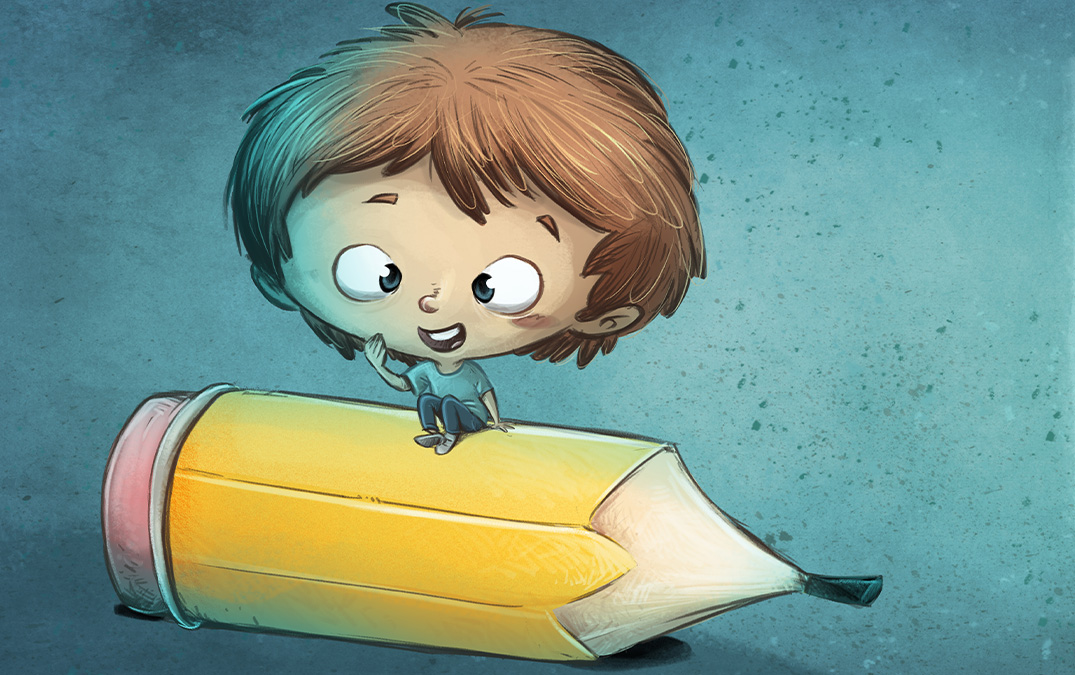On the ScrivKids blog, we hope to help young writers find success with their writing goals. The articles posted here are written by industry professionals from many different backgrounds. We’ll share advice from authors, editors, publishers, and others who have experience and insight into what it takes to find success as a writer.
Maybe you know you want to be an author, or maybe you write because it’s a great creative outlet. Either way, the articles we share here are designed to help writers at all stages learn a little more about how to develop their talent. In the end, we hope to give you the tools needed to become a great story teller. Take our advice and adapt it to work for you and your writing style. Remember there are no hard-and-fast rules for creative expression.
Now, diving into our first topic: short stories!
The ScrivKids writing contest has two categories for entry: flash fiction and short stories. So, if you’re going to write a short story, we want to give you some help!
What is a short story?
Short stories are an exciting exercise in writing, and they’re incredibly fun for readers. In a short story, we still get complex characters, a compelling plot, and conflict that keeps us reading, just like we would in a novel, but the story is delivered in a short, compact package. For the ScrivKids writing competition, we define a short story as between 2,000-6,000 words. That comes to around 6-25 pages of double-spaced, 12-point font.
A short story can be anything as long as it has a beginning, a climax, and a resolution. That’s not to say every question raised in the story must be answered by the end. Many short stories intentionally leave some ambiguity that causes a reader to think, but the reader should still be left with a satisfying conclusion to the story. Generally, because a short story is significantly shorter than a novel, the story will deal with only one or two main themes, where a novel may branch out with various subplots.
Characters in Short Stories
A short story typically contains fewer characters than a full-length novel would. It can be difficult for a reader to connect with a lot of different people in so few words, so including too many characters may be a mistake that prevents your readers from forming a deep connection with your main character(s). Generally, it’s best to stick with a couple of main characters with a few added characters needed to make the story work.
For example, think of many classic fairy-tales. In Little Red Riding Hood, the story focuses on Little Red, her grandmother, and the big-bag wolf. The story has two main characters and the villain.
Same for Hansel and Gretel. The story would lose its efficacy if we were constantly being pulled to a sub-plot about a wandering woodsman who is bored with his occupation. Perhaps in a novel, these two storylines might meet down the line. But when trying to build the tension of the danger that Hansel and Gretel face from the witch, it’s far better to leave the reader focused on these few characters.
Setting
Like character, the setting for a short story is often limited. It will probably take place in only one or two places. In the short story The Princess and the Pea, we never know where the princess is from or why she arrives at the castle soaked from the rain. This element of the unknown adds to our suspense as readers because we don’t know if she’s really a princess like she claims. We worry she might be caught by the crafty queen who places the pea under twenty mattresses. What normal person would be bothered by such a thing? We’re filled with relief when the princess is unable to sleep, proving she must be who she claims. In this example, limited setting is used well to increase the tension in the story.
The beauty of writing fiction is that you can create anything you need in your setting. What elements of the time or place could emphasize a point you’re trying to make? Is your main character a hopeless romantic? Have your story take place on Valentine’s Day in a high school. In your story, is there conflict over access to water? Then add in a dry riverbed outside your character’s home to emphasize their desperation. There are infinite ways you can use setting to move forward your plot or add another layer to your characters.
Pacing and Word Choice
In a short story, every sentence matters. Try not to worry too much about this in your first draft, but after you’ve finished, go through it again. Ask yourself if every sentence is necessary. Does it add to the story in some way? Is it helping us understand your character better? Does it enhance the tension of the plot? If not, it is probably something you can cut. When so few words are permitted, your reader will expect to come to the central conflict quickly and will probably get bored if progress in the story is bogged down with unnecessary details or dialogue.
Go ahead and give writing a short story a try. You might find you like the focus and narrow scope a short story provides.
Be sure to check the blog often. Over the next few months, we are going to focus on the six elements of great story telling. Combine the tips we’ll give there with the parameters for a short story and you’ll have the recipe for winning the hearts of our judges in the ScrivKids writing contest.
Happy writing!

